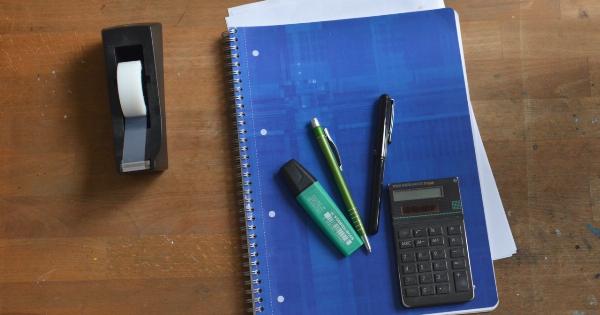Weight loss is a goal that many individuals strive to achieve, but finding the time and energy to commit to a strict diet and exercise regimen can be challenging.
However, with advancements in technology and innovative approaches, it is now possible to put weight loss on autopilot. This means that you can continue shedding pounds even when you’re not actively focusing on it. In this article, we will explore various strategies and techniques that enable you to achieve weight loss without constantly thinking about it.
The Concept of Weight Loss on Autopilot
Weight loss on autopilot refers to making small, sustainable changes to your lifestyle that promote continuous weight loss without requiring constant effort.
By incorporating these changes into your daily routine, you can create a lifestyle that naturally supports weight loss. The key is to establish habits and routines that require minimal conscious effort, allowing you to lose weight effortlessly.
1. Mindful Eating
Mindful eating is a practice that focuses on paying attention to every aspect of your eating experience. By being fully present and engaging all your senses while eating, you can enhance the satisfaction and enjoyment derived from your meals.
This can be achieved by:.
- Eating slowly and savoring every bite
- Avoiding distractions like smartphones or television
- Chewing your food thoroughly
- Listening to your body’s hunger and fullness cues
2. Portion Control
Controlling portion sizes is a crucial component of weight loss on autopilot. By training yourself to eat smaller portions, you can reduce your overall calorie intake without feeling deprived. Some effective strategies for portion control include:.
- Using smaller plates and bowls to create an illusion of a fuller portion
- Measuring and weighing your food to ensure accurate portion sizes
- Planning your meals and snacks in advance
- Paying attention to serving sizes mentioned on food labels
3. Set Up a Meal Schedule
Establishing a regular meal schedule can automate your eating habits, making weight loss easier. When you have consistent meal times, your body becomes accustomed to digesting and metabolizing food at specific intervals. Consider:.
- Having three balanced meals and two healthy snacks each day
- Avoiding long periods without eating to prevent overeating later
- Planning and preparing your meals in advance
- Being consistent with your meal times
4. Choose Nutrient-Dense Foods
Opting for nutrient-dense foods ensures that your body receives essential vitamins and minerals without excessive calories. Foods that are rich in nutrients keep you satiated for longer periods, reducing cravings and the likelihood of overeating.
Include the following in your diet:.
- Fruits and vegetables
- Lean proteins
- Whole grains
- Healthy fats
5. Stay Hydrated
Drinking enough water is crucial not only for overall health but also for weight loss. Water helps to flush out toxins, boosts metabolism, and can contribute to a feeling of fullness. Consider the following tips for staying hydrated:.
- Carry a reusable water bottle with you throughout the day
- Set reminders on your phone to drink water at regular intervals
- Replace sugary drinks with water or herbal teas
- Include water-rich foods like cucumbers and melons in your diet
6. Incorporate Physical Activity
While weight loss on autopilot focuses on effortless strategies, incorporating physical activity is still essential. Regular exercise not only burns calories but also supports overall well-being. Consider these low-effort activities:.
- Walking or biking instead of driving short distances
- Taking the stairs instead of the elevator
- Doing household chores like vacuuming or gardening
- Engaging in activities you enjoy, such as dancing or swimming
7. Get Quality Sleep
Adequate sleep is crucial for maintaining a healthy weight. Lack of sleep disrupts hormonal balance, leading to increased hunger and cravings, while also decreasing willpower and energy levels. Prioritize sleep by:.
- Establishing a consistent sleep schedule
- Creating a calm and comfortable sleep environment
- Avoiding caffeine and electronic devices before bed
- Practicing relaxation techniques, such as deep breathing or meditation
8. Manage Stress Levels
Chronic stress can sabotage weight loss efforts by triggering emotional eating or disrupting sleep patterns. Implement stress-management techniques to maintain a healthy, balanced mindset, such as:.
- Engaging in regular exercise or yoga
- Practicing mindfulness or meditation
- Prioritizing self-care activities
- Connecting with loved ones or seeking professional support
9. Monitor Your Progress
Tracking your progress is essential for successful weight loss on autopilot. It provides accountability and helps you assess the effectiveness of the strategies you’ve implemented. Consider the following methods of tracking:.
- Keeping a food journal to record meals and snacks
- Using smartphone apps that track calorie intake and physical activity
- Weighing yourself regularly to gauge progress
- Taking measurements of your body to observe changes
Conclusion
Putting weight loss on autopilot involves making sustainable lifestyle changes that promote continuous progress without constantly thinking about it.
By implementing strategies like mindful eating, portion control, regular meal schedules, and physical activity, you can achieve weight loss without feeling overwhelmed or deprived. Remember to monitor your progress, adapt your approach if necessary, and seek support from professionals or loved ones if needed.
With dedication and consistency, you can embark on a weight loss journey that becomes second nature, transforming your health and well-being.




























